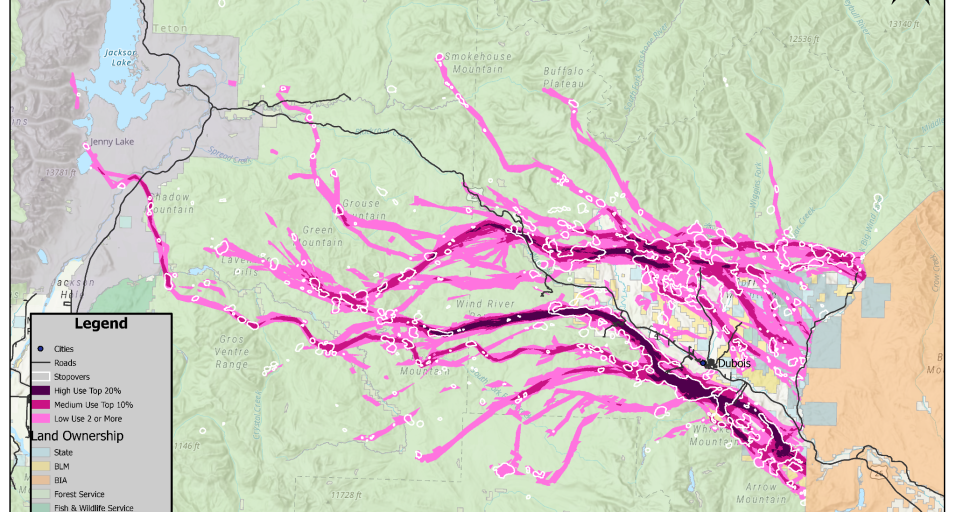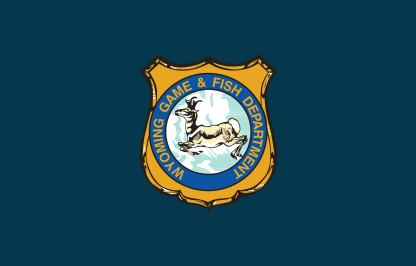DUBOIS — The Wyoming Game and Fish Department is seeking Game and Fish Commission approval to identify the Upper Wind River mule deer migration corridor. Game and Fish will hold public meetings to seek public input and discuss the proposed identification of the migration corridor maps and draft threat evaluation.
Based on the current and anticipated threats and in consideration of the existing protections, the department recommends identifying this migration corridor. A designation of the corridor is not necessary. Identifying the migration corridor will provide land managers with the best data to voluntarily implement conservation measures and secure additional funding to maintain the functionality of the corridor.
“The meetings are an opportunity for the public and stakeholders to be directly involved in discussions about migrations in Wyoming,” said Doug Brimeyer, Game and Fish deputy chief of wildlife. “Local information and knowledge is key to understanding mule deer movement and is essential in the review process of the draft corridor map and threat evaluation.”
Game and Fish is hosting two public meetings on the following dates and times:
Date | Time | City | Location |
July 8 | 5 p.m. | Jackson | Jackson Public Library |
July 9 | 6 p.m. | Dubois | Dennison Lodge |
The Upper Wind River mule deer migration corridor is primarily used by the Dubois mule deer herd, but also provides vital passage for mule deer from the Sublette herd and Grand Teton and Yellowstone national parks. The Dubois herd has declined over the past 20 years, but not to the degree of statewide declines. This may be partly due to the long-standing use of intact migration routes and winter ranges. Mule deer in this herd migrate distances ranging from five to 90 miles between their high-elevation summer ranges in the Wind River, Absaroka, Gros Ventre and Teton mountain ranges and their low-elevation winter ranges on the eastern Wind River front.
The Upper Wind River valley and U.S. Highway 26 follow the same paths. While the Upper Wind River serves as a major deer migration route between summer and winter ranges, U.S. Highway 26 is a key access route for people traveling to national parks and Jackson Hole. The close proximity of deer and vehicle migration routes results in frequent wildlife-vehicle collisions, particularly in the spring and fall migrations when hundreds of mule deer cross the road.
The proposed identification of the migration corridor complementsThe Wind River to Grand Tetons—Connecting Wildlife on the Togwotee Trail wildlife crossing collaborative project between the Northern Arapaho and Eastern Shoshone tribes, Game and Fish, Wyoming Department of Transportation and other partners. This wildlife crossing project will include the construction of three new underpasses, one overpass and the improvement of three existing underpasses. These crossings will reduce wildlife-vehicle collisions and maintain habitat connectivity for mule deer and a variety of other species.
Identifying the migration corridor and developing the threat evaluation is the first step outlined in the Governor’s Executive Order and is open to public comment. The deadline to submit comments is 5 p.m. Aug. 9. Written comments and the department’s recommendation will be presented to the Wyoming Game and Fish Commission before its September meeting in Douglas.
“Moving forward in the process is an important step in managing vital mule deer habitat in Wyoming,” Brimeyer said. “With the identification of the corridor, additional funding opportunities become available for conservation-based projects on private and public lands to treat invasive annual grasses, improve range fences to wildlife-friendly standards and other proactive management actions.”
Visit the Game and Fish website to learn more about the identification of the migration corridor and view helpful resources.
The Wyoming Game and Fish Department supports the Americans with Disabilities Act. Every effort will be made for reasonable accommodations by contacting the nearest Game and Fish office.



